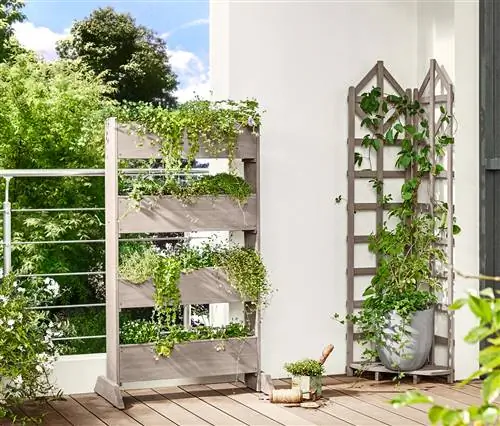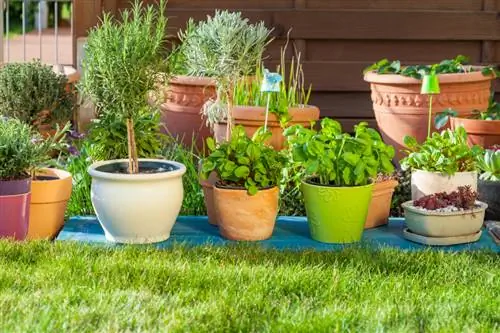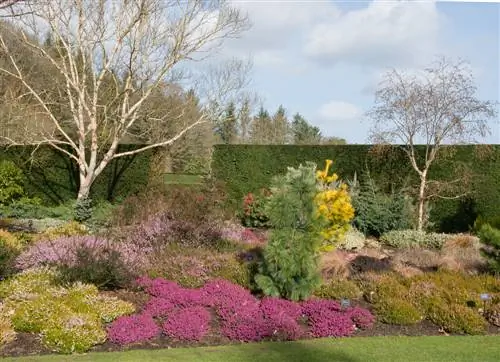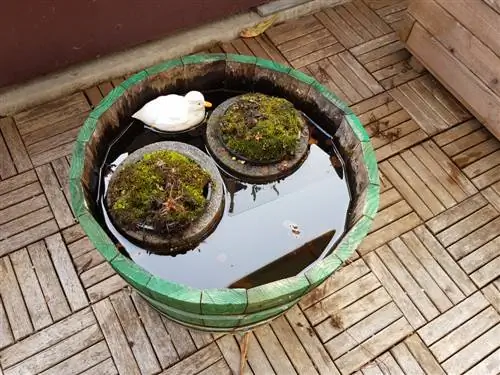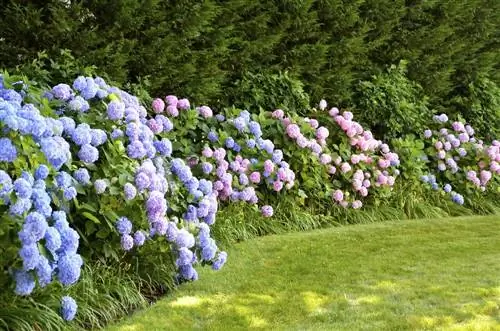- Author admin [email protected].
- Public 2023-12-24 06:09.
- Last modified 2025-01-23 11:22.
Many Germans have a balcony. They spend many hours there, especially in the warm season, enjoying the sun. Colorful and beautiful planting is therefore a must for many. There are no limits to creativity and your balcony at home can certainly keep up with your neighbor's garden. With these useful tips, nothing stands in the way of a summer on the balcony.
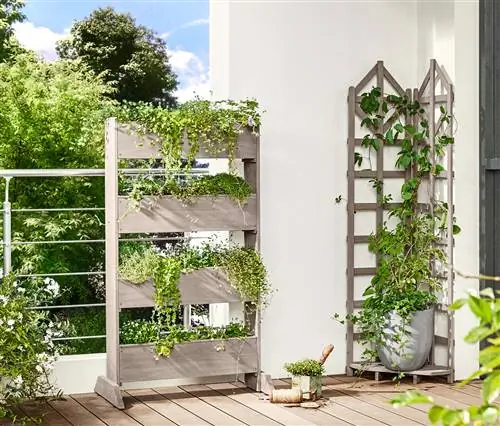
How do I design a flowering balcony?
For a flowering balcony, combine sun-loving plants such as petunias, geraniums and lavender in sunny locations, while fuchsias, busy lizards and bluebells are suitable for shady areas. Use vertical beds, hanging pots and plant bags to maximize space and add creative flair.
Vertical beds, hanging pots and plant bags
Vertical beds or flower stairs offer the opportunity to grow a variety of wonderful plants in a small space. There is space for a colorful variety of flowers on several shelves arranged one above the other. They are also ideal as privacy screens. Another option for planting is trendy plant bags. Made from robust textile fabric, they offer a modern alternative to classic hanging pots. In addition to flowers, plant bags are good for your own small herb garden or even growing potatoes. If you want more demanding plants, a small greenhouse is the right choice. A shelf covered with translucent walls with various ventilation options always offers the hobby gardener the opportunity to create the optimal conditions for his plants. Tchibo has great offers for the balcony and other tips so that the balcony becomes a real eye-catcher.

Source: Tchibo.de
Plants for the balcony
Countless plants are available for planting. However, it is important to consider how much sun falls on the balcony. Some are ideal for south-facing balconies with lots of sunlight, others prefer (partial) shade. Which popular plants are suitable for each location is listed in the following table:
| Sunny location | Shady location |
|---|---|
| Petunia | Fuchsia |
| Geranium | Hardworking Lieschen |
| Sage, Thyme & Rosemary | bleeding heart |
| Lavender | Bellflower |
With this colorful selection there is sure to be something for everyone. But of course there are a few others that are wonderfully suitable. When choosing, you should always take into account what will happen to the plants in winter, as most balcony plants are not winter-proof. If there is no space available for storage in winter and the plants last longer than one season, it is advisable to use special plant species. Ferns and hostas can survive cold weather, and hydrangeas and rhododendrons will bloom again next summer if they have been cut back heavily. Of course, there are also many tips on how to make the plants winter-proof.
Caring for balcony plants
The first question that arises when planting is the right soil. Because in narrow pots or boxes, the plants are particularly dependent on a good substrate. It is therefore advisable to use branded soil (€7.00 on Amazon). This offers good absorption capacity for water and fertilizer and remains loose and permeable. Many substrates for balcony plants already contain fertilizer, some even long-term fertilizer that is only used up after more than a month. It is then advisable to follow up with liquid fertilizer. Depending on the manufacturer's instructions, this can be added directly to the irrigation water and should be added to the plants every one to two weeks.
The Vegetable Balcony
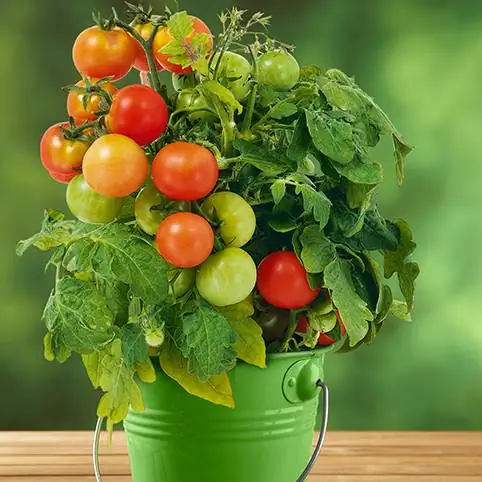
Source: Tchibo.de
Plants can not only look great, they can also be useful. In addition to colorful flowers, it is possible to grow fresh vegetables and herbs - on the balcony. Tomatoes, peppers or garden herbs such as basil and rosemary are particularly suitable. The herbs in particular are very easy to care for and exude a wonderful smell. But special varieties of eggplant and carrots can also be grown in containers. However, in order for the plants to thrive, they need sufficient care. In addition, the larger the container, the greater the yield. Pots that are too small can lead to disappointment. Firmly anchored climbing aids are essential for climbing vegetables such as cucumbers or zucchini. Lettuce can be grown optimally in the raised and vertical beds described in the upper part.
If you have enough time for care and fun gardening, it is recommended to grow the plants from seeds. On the one hand, this is significantly more cost-effective, and on the other hand, garden centers often do not offer special young plants for balcony vegetables. Sowing can begin on a south-facing balcony from April, and sowing can begin on west or east-facing balconies from May.
Creative ideas for the balcony
To save on standard clay pots, fashionable containers for plants can be made from old tin cans. Painted black and with small holes in the base, they form the perfect home for a wide variety of garden herbs.
Plastic flower boxes are often not a pretty sight. So why not make your own out of old wine crates? Using belts (fixed with hot glue or nails), the box can be easily attached to any railing.

